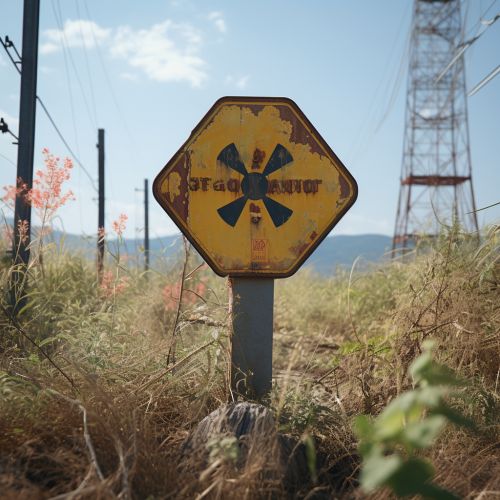Radioactive contamination
Introduction
Radioactive contamination, also known as radiological contamination, involves the deposition of, or presence of radioactive substances on surfaces or within solids, liquids or gases (including the human body), where their presence is unintended or undesirable. This type of contamination presents a hazard because of the radioactive decay of the contaminants, which emit harmful ionizing radiation such as alpha particles or beta particles, gamma rays or neutrons.
Causes
Radioactive contamination can occur in various settings such as in the environment, workplaces handling radioactive materials, nuclear accidents, and as a result of nuclear warfare. The spread of radioactive contamination can occur through various means such as air, water, and biological organisms. It can also be spread through the food chain and can cause long-term effects in an ecosystem.
Types of Radioactive Contamination
There are two types of radioactive contamination: fixed and removable. Fixed contamination is radioactive material that is in the structure of an object and cannot be spread. Removable contamination is radioactive material on the surface of an object that can be spread to other objects or people.
Measurement and Detection
The measurement of radioactive contamination is done using instruments such as Geiger-Muller counters, scintillation detectors, and dosimeters. These instruments measure the rate of radioactive decay, which is used to determine the level of contamination.
Prevention and Decontamination
Prevention of radioactive contamination involves a combination of good operational practices, containment of radioactive material, and use of protective clothing and equipment. Decontamination can be achieved through a variety of methods including mechanical cleaning, chemical cleaning, and the use of decontamination agents.
Health Effects
Exposure to radioactive contamination can lead to a variety of health effects, ranging from mild symptoms such as nausea and vomiting, to more serious conditions such as cancer and death. The severity of the health effects depends on the type and amount of radiation exposure.
Environmental Impact
Radioactive contamination can have a significant impact on the environment. It can affect both terrestrial and aquatic ecosystems, and can cause long-term damage to the environment.
Legal and Regulatory Aspects
There are numerous international and national laws and regulations that govern the handling, transportation, and disposal of radioactive materials to prevent and manage radioactive contamination.
See Also


Note: The image should show a sign warning of radioactive contamination. It should be clear and easily recognizable. The sign should not be damaged or obscured in any way. The background should be neutral and not distracting. The image should be taken in good light conditions.
